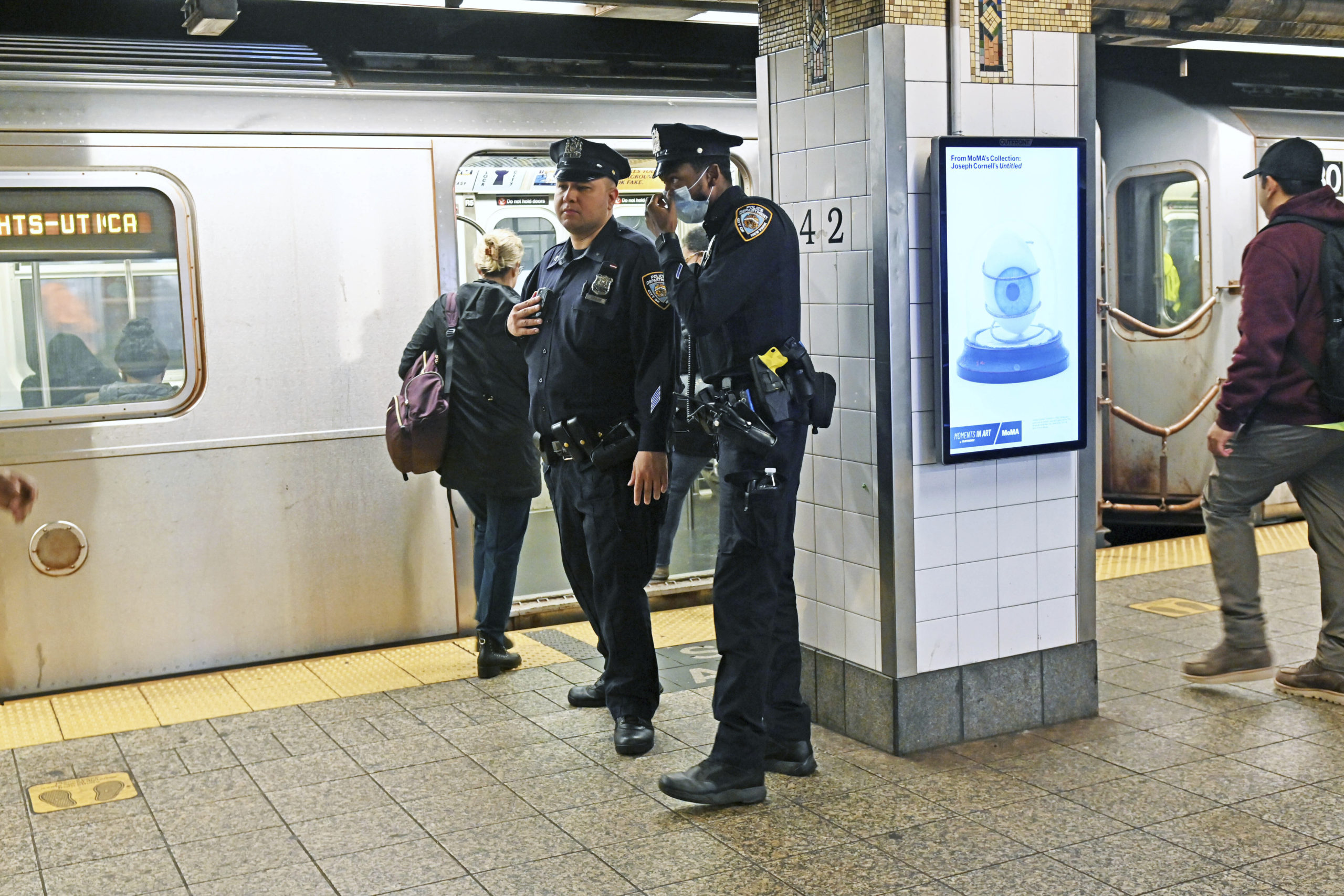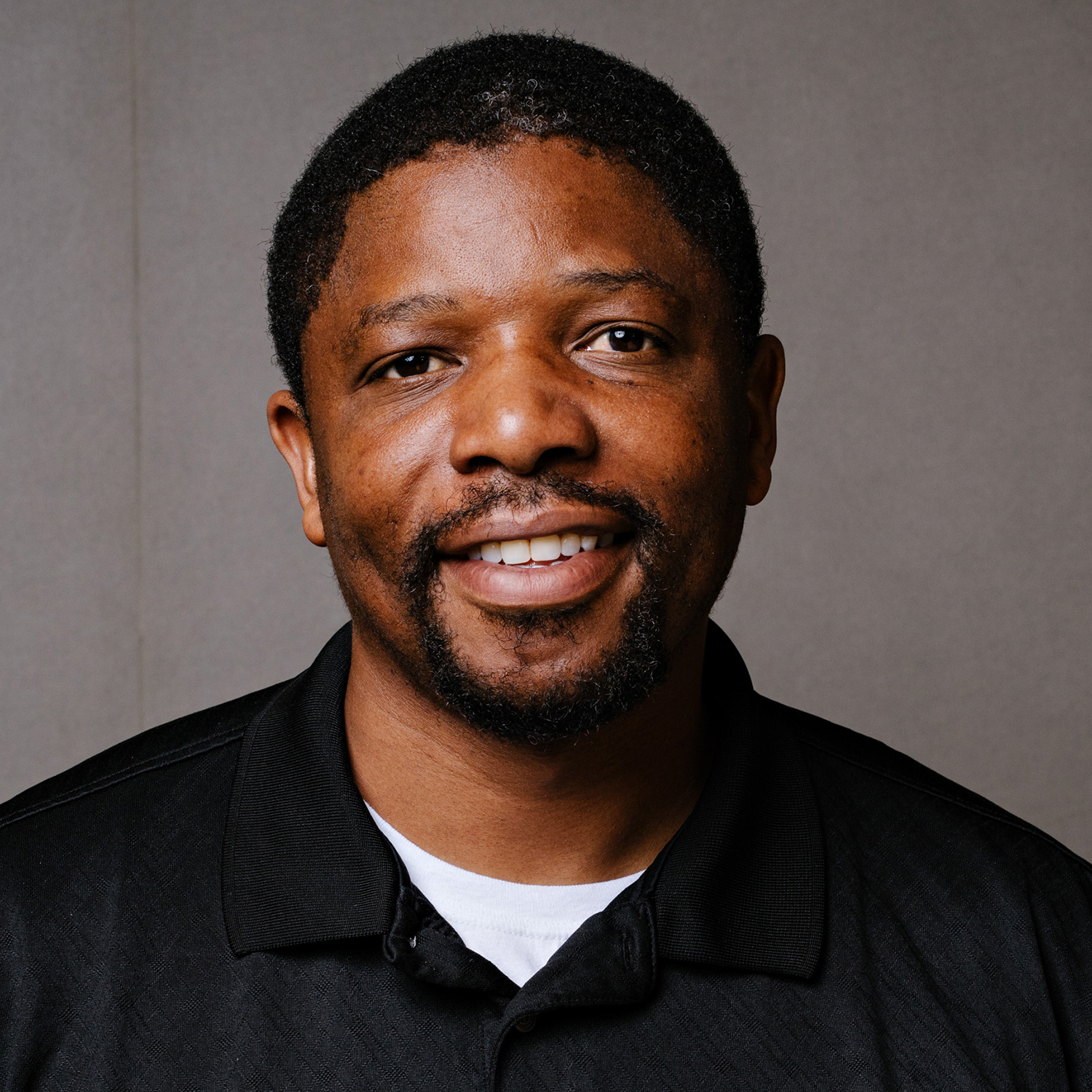
The NYPD has increased its presence in the city subway system due to the rapid increase in crime throughout the city, Oct. 2022. How the media reported on crime rates during the midterms shows how journalists are never merely reporting
When my wife and I visited New York in December, I wasn’t sure if we’d be safe on the subway, walking up and down the streets, or if it would be wiser to stick to Uber. I’m certain a major cause of my heightened sense of fear, or dread, was the media I had consumed in the lead-up to the 2022 midterm elections. I was consuming that news while preparing to teach this spring at Columbia University. Something fundamental had changed in New York, the crime narrative strongly suggested, and while the city hadn’t returned to the bad old days of the 1990s, it hadn’t been this unsafe in years.
It’s a reminder of the power we wield as journalists. We aren’t simply observers of the world — we help shape and reshape it every time we publish, broadcast, and choose to highlight one set of facts over another. It’s something we sometimes forget or downplay, our effect on the environment we’ve been charged with helping audiences better understand.
I was reminded of that when I came across a recent exchange on Twitter. A journalist had been criticized for the way she tweeted about comments from Rep. Jim Jordan and she responded by saying: “My tweet merely reports what he said his intentions will be for the committee he is about to control.”
Here’s to hoping 2023 is the year journalists forever stop claiming we are merely reporting. Because we never are.
Maybe we were right to report in precisely the manner we did. Maybe the way we edited, the words we chose, and the process we adhered to were reasonable, ethical, and necessary. But never is it merely reporting, particularly not on the most complex and contentious issues of the day. That’s true no matter if we can’t perfectly foresee what effect that reporting will have.
That’s why it would be unwise for us to downplay the real possibility that the decisions we make affect political and other outcomes even if there is no way to definitively prove just how much. Many news organizations fell into the same trap of playing up crime without the relevant context, but consider these few examples just from The New York Times alone:
- How would the 2004 election been affected had The Times published its warrantless wiretapping story in October of that year, letting voters know about a secret NSA program eavesdropping on Americans domestically without warrants, instead of after the election? Would that have been the beginning of a narrative that affected the outcome of that race?
- How would the 2016 election been affected had The Times decided against dedicating its entire front page to coverage of Hillary Clinton’s emails after FBI Director James Comey reopened the investigation at the 11th hourof a tight election? How much did that contribute to the narrative that had taken hold throughout media that the outcome was solely about Hillary Clinton’s campaign performance?
- Would the 2022 midterms have gone differently had The Times, and others, handled their crime coverage differently?
Of course, narratives are built through a constant drumbeat throughout media more than on singular stories or a lone media outlet. Still, The Times is the paper of record and its coverage often gets a narrative rolling or supercharges one that’s already in effect. I consumed crime stories from multiple outlets but the throughline was The Times, which is why that third example stands out because of a story the paper published after the midterms. It included this:
“New York and its suburbs may remain among the safest large communities in the country. Yet amid a torrent of doomsday-style advertising and constant media headlines about rising crime and deteriorating public safety, suburban swing voters like Ms. Frankel helped drive a Republican rout that played a decisive role in tipping control of the House.”
It’s the kind of clear, vital context I did not often see in crime coverage in the lead-up to the midterms. It wasn’t present in this pre-midterm article that only gave the audience a cursory look at the facts about crime rates, saying they were mixed. In a story in which the difficulty of accurately tracking crime was explored a little more in depth, still the narrative was that the fear of crime, real or imagined, was going to benefit Republicans.
When San Francisco voters recalled a progressive prosecutor, Shane Goldmacher of The Times wrote that voters had “delivered a stark warning about the potency of law and order as a political message” to the Democratic Party while not seeming to notice when progressive prosecutors won last year and tough-on-crime law enforcement officials lost. In another Times piece titled “Adams Blames Bail Law After Release of Teen Charged in Officer Shooting,” you had to read eight paragraphs into the story to know that what New York Mayor Eric Adams claimed in the lede about bail reform was simply false. And in the past couple of weeks, we’ve been learning that stories that proclaimed a massive uptick in retail shoplifting, like in this first-person piece, were also suspect as major retailers like Walgreens have now admitted they overhyped shoplifting fears while blaming it for store closures.
I wasn’t the only one who noticed this, as The Times pointed out in its post-midterm story: “The attempt to capitalize on upticks in crime may have fallen short for Republicans elsewhere across the nation. But from Long Island to the Lower Hudson Valley, Republicans running predominantly on crime swept five of six suburban congressional seats, including three that President Biden won handily that encompass some of the nation’s most affluent, well-educated commuter towns.”
Republicans alone weren’t responsible for heightened fears about crime; journalists were as well. I know the coverage affected me, despite my background.
When my wife and I visited New York in December, I didn’t know if I should put my wallet in my front pocket but thought there was an above-average chance I’d have to face off with a mentally ill homeless person. We began taking the subway midway through our short visit. Still, I made it a point to steer clear of most everyone not knowing if I’d be pushed on the tracks, all while trying not to alarm my wife with my concerns.
It wasn’t my first time in New York. I’ve faced a few things and know well the dangers of the world, including violent crime. I’m not one to under or overplay risks. My first breakthrough story as a young journalist came after I spent several nights with homeless men on the streets of Myrtle Beach. I know well the travails of drug abuse, which heavily contributed to my oldest brother murdering a man when I was a nine-year-old boy. And I know that for communities like the one in which I grew up, crime is a perpetual concern even when the crime rate is at historic lows and doesn’t generate hyperbolic headlines. The difficulty is balancing the need to report on crime and other societal problems in a way that takes them seriously without overhyping the risk. When such coverage isn’t executed well, it ends up harming vulnerable populations because even those not in harm’s way become convinced draconian measures that disproportionately harm the vulnerable should be implemented, and they sometimes make that clear with their vote.
My wife and I made it back to Myrtle Beach from New York without incident — like we had several times before — even after making a spur-of-the-moment decision to join dozens of strangers on a tour near the Statue of Liberty and spending a couple of hours exploring the Harlem area.
As journalists, we can’t predict how our work will affect people even several hundred miles away from our primary coverage area. We shouldn’t even try. But we should never forget the power of our words.


